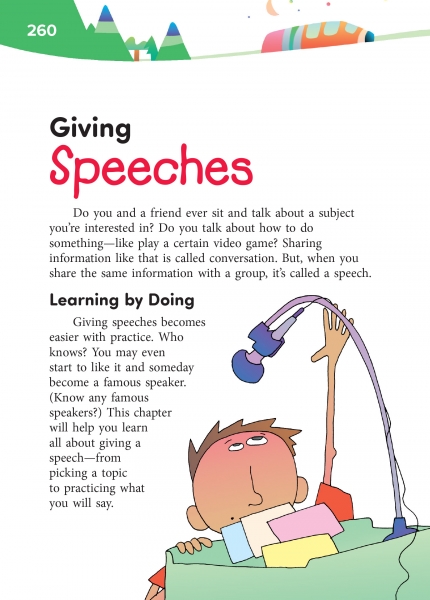Page 260 from

Start-Up Activity
Share with your students excerpts from a famous speech, such as Malala Yousafzai's Nobel Peace Prize speech or Martin Luther King Jr.'s speech, "I Have a Dream."
Ask your students why speeches are important. How do they affect their listeners? What makes a great speech?
Tell your students that they will have their own chances to write and deliver speeches, whether to entertain, inform, or persuade.
Think About It
“First learn the meaning of what you say, and then speak.”
—Epictetus